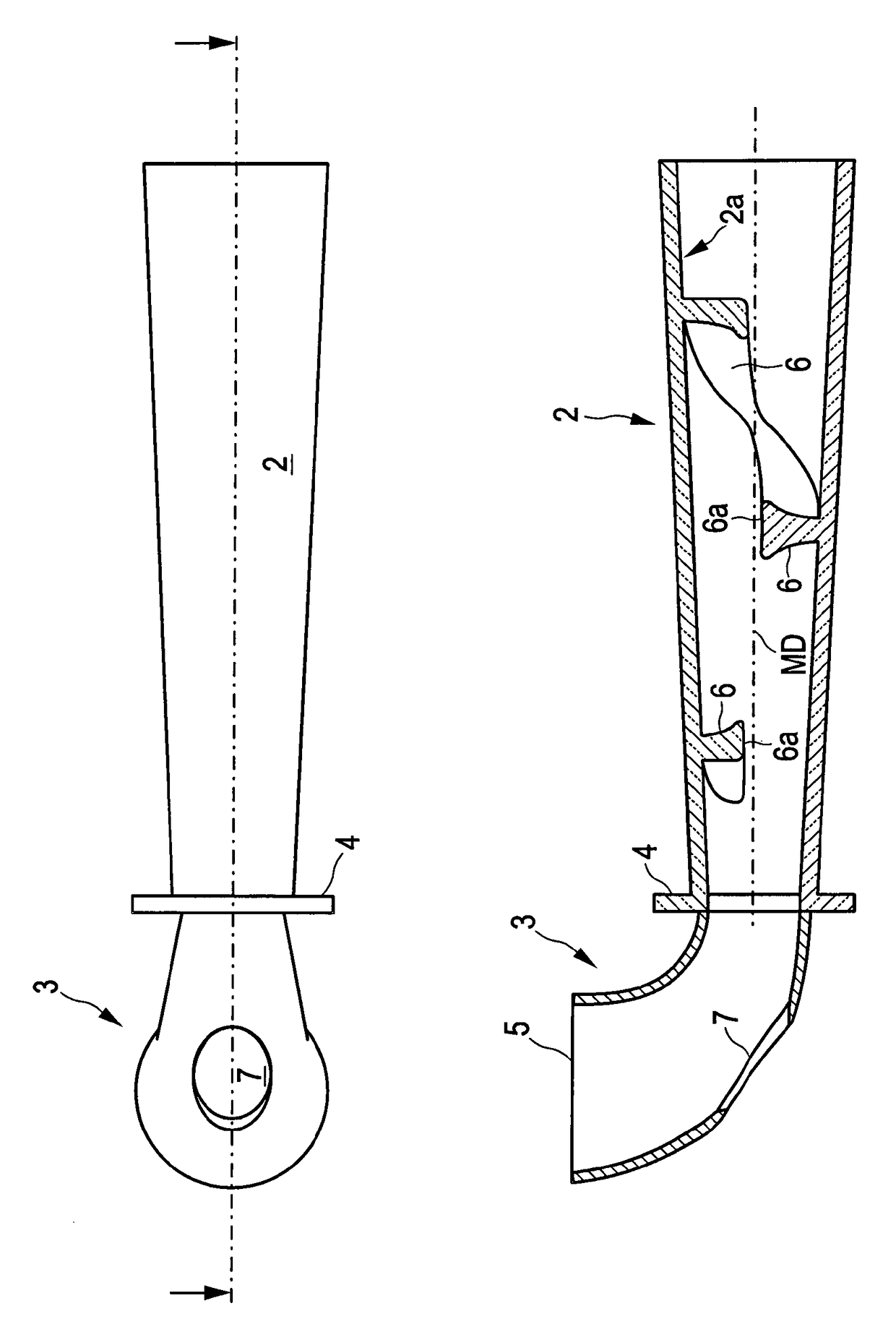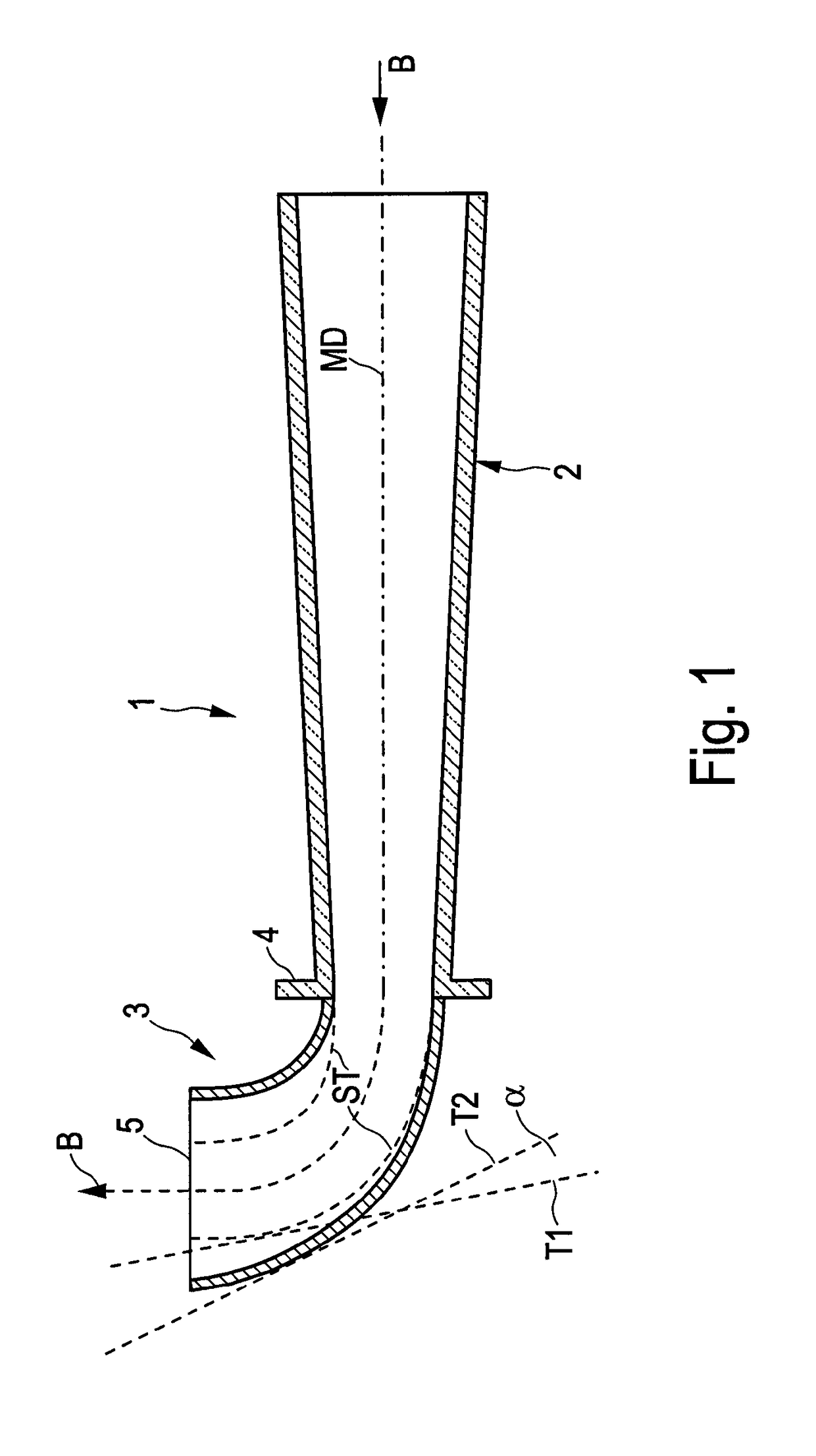Blood cannula
a technology of blood cannula and cannula, which is applied in the direction of catheter, etc., can solve the problem of accelerating blood before exiting, and achieve the effect of improving blood entry
- Summary
- Abstract
- Description
- Claims
- Application Information
AI Technical Summary
Benefits of technology
Problems solved by technology
Method used
Image
Examples
Embodiment Construction
[0033]FIG. 1 shows a sectional view of a cannula according to a first embodiment in the plane of the bending of the cannula, which corresponds to the plane of the paper-sheet. The cannula comprises a tubular body 1 having a proximal end 2 and a distal end 3. The proximal end 2 has a straight form and is tapered from the beginning in the direction of the blood flow, indicated by the arrow B. The cross section of the distal end 3 is extending in the direction of flow, the expansion starting from the point where a flange 4 surrounds the tubular body at its internal waist. The mean direction of the blood flow is indicated by a dashed line MD, essentially corresponding to the geometrical middle line of the tubular body 1.
[0034]In order to visualize the difference between invention and state of the art there is furthermore indicated by dashed line ST the form of a conventional cannula having a constant cross section beyond the flange.
[0035]As can be seen the expansion is here given by the...
PUM
 Login to View More
Login to View More Abstract
Description
Claims
Application Information
 Login to View More
Login to View More - R&D
- Intellectual Property
- Life Sciences
- Materials
- Tech Scout
- Unparalleled Data Quality
- Higher Quality Content
- 60% Fewer Hallucinations
Browse by: Latest US Patents, China's latest patents, Technical Efficacy Thesaurus, Application Domain, Technology Topic, Popular Technical Reports.
© 2025 PatSnap. All rights reserved.Legal|Privacy policy|Modern Slavery Act Transparency Statement|Sitemap|About US| Contact US: help@patsnap.com



